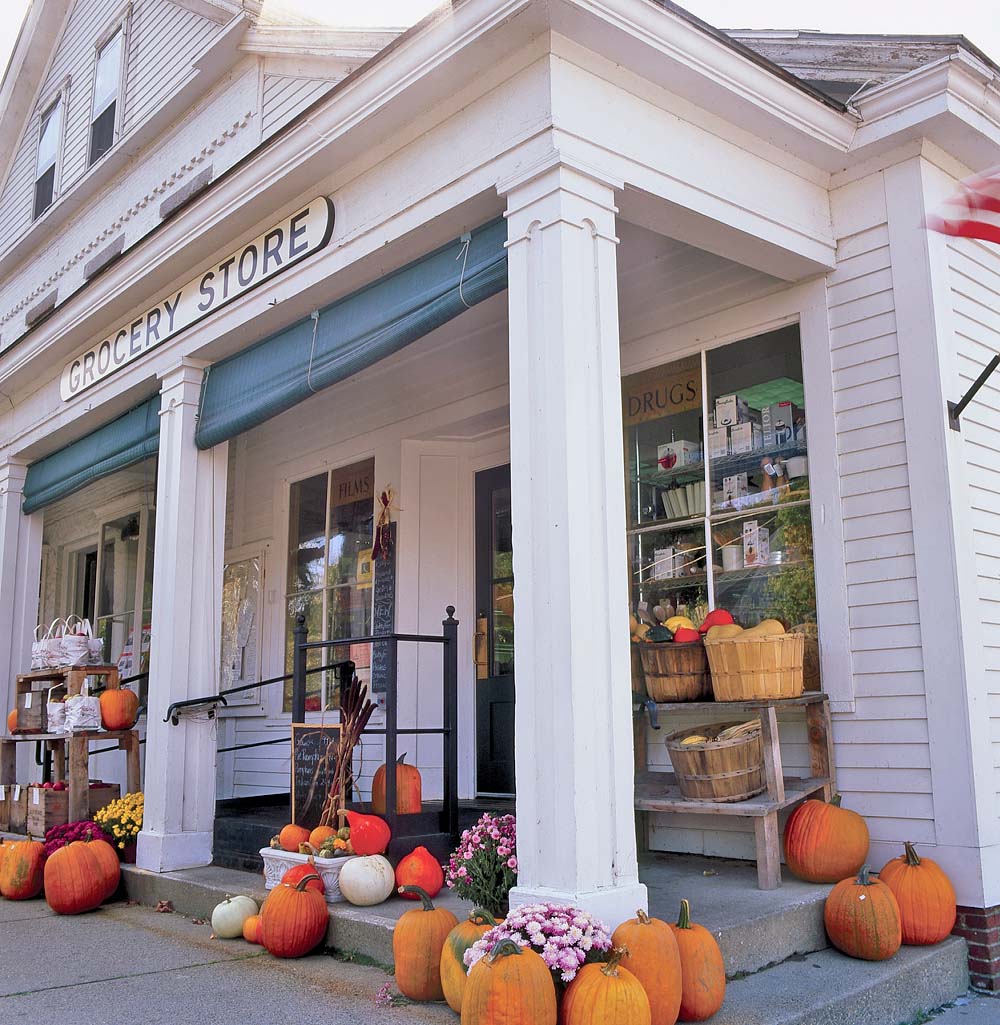Monadnock Region: New Hampshire
For those of us who live here in the southwestern pocket of New Hampshire, we know we’re home when we see our mountain, our Monadnock, on the horizon. It rises only 3,165 feet, modest enough compared with many in the Whites, or Katahdin in Maine. But geology has emboldened Monadnock. It stands alone, with no […]

Walpole, NH
Photo Credit : Gray, SaraFor those of us who live here in the southwestern pocket of New Hampshire, we know we’re home when we see our mountain, our Monadnock, on the horizon. It rises only 3,165 feet, modest enough compared with many in the Whites, or Katahdin in Maine. But geology has emboldened Monadnock. It stands alone, with no other prominence to distract us — an only child who receives undivided love. Nowhere else in New England does a single mountain give such a powerful sense of geographical identity. When I travel outside the state and people ask me where I’m from, I simply say, “The Monadnock region,” the way I imagine someone might say, “Tuscany.”
“The mountain that stands alone,” however, is rarely, if ever, alone. Each year some 125,000 hikers head up its worn trails, climbing above the tree line in less than an hour — and suddenly the land stretches below in an unbroken vista of woods and ponds and lakes. The hikers climb higher, across the cairn-strewn, bouldery paths that bring them to the summit, where folks mingle and sit picnicking beside their day packs. I’ve been there during autumn weekends when the summit has been as populated as a summer beach. Local lore says that Monadnock is the second-most-climbed mountain in the world, surpassed only by Fuji in Japan. Climbers come, in part, because Boston is only 65 miles away. And they come for the views — which on clear days take you to all six New England states in one single, circling gulp. Thoreau came. So did Emerson, and Mark Twain, and heavyweight champion John L. Sullivan. Mountain historians reckon that since the 19th century, five million people have walked Monadnock’s trails.
While visitors strain for the glint of sunlight off the windows of Boston’s Prudential Center to the southeast, or the elusive shape of Mount Washington to the north, we who live here look closer: to a village, a church, a cleared swath of farmland, the lake where we swim, the house where we live. This Monadnock region isn’t made for distant viewing anyway.
Forty towns and villages — including one small city of 22,000 — claim kinship with Monadnock, and within them there are more streams, lakes, ponds, waterfalls, and tree-lined back roads connecting with other tree-lined back roads than you can see in months of touring around. I’ve lived here 30 years, and I still come upon hidden beauty and curiosities I never knew.
For me, the most striking views of Monadnock are from Jaffrey and Dublin, the two towns that share the mountain’s craggy slopes. But neither is my favorite. That accolade belongs to the view as I approach Peterborough from the east, on my way back from Manchester or Boston, where just before town, the road dips, and suddenly the mountain is all I see — dark and wide, calling as insistently as a lighthouse beacon calls sailors home.
For two centuries, writers, artists, and craftspeople have responded, establishing colonies near the mountain. Even today, as you drive around the area, you’ll find painters setting up their easels in villages like Harrisville and Hancock. Willa Cather, the novelist who brought the westward migration to life with wondrous tales, including My Antonia and O Pioneers!, visited the Monadnock region for years, writing within sight of the mountain. When she died, she was interred in a corner of the Jaffrey Center graveyard, the Old Burying Ground behind the Meetinghouse. If you come here, do what we do: Take your time, drive slowly, stop often. Chances are you’ll find, like Willa Cather, the secret of Monadnock’s hold on us. Why would anyone want to leave?
Read more:Eat, Stay, Shop in Monadnock RegionWhat the Yankee Locals KnowDriving Tour of the Monadnock RegionMel Allen
Mel Allen is the fifth editor of Yankee Magazine since its beginning in 1935. His first byline in Yankee appeared in 1977 and he joined the staff in 1979 as a senior editor. Eventually he became executive editor and in the summer of 2006 became editor. During his career he has edited and written for every section of the magazine, including home, food, and travel, while his pursuit of long form story telling has always been vital to his mission as well. He has raced a sled dog team, crawled into the dens of black bears, fished with the legendary Ted Williams, profiled astronaut Alan Shephard, and stood beneath a battleship before it was launched. He also once helped author Stephen King round up his pigs for market, but that story is for another day. Mel taught fourth grade in Maine for three years and believes that his education as a writer began when he had to hold the attention of 29 children through months of Maine winters. He learned you had to grab their attention and hold it. After 12 years teaching magazine writing at the University of Massachusetts-Amherst, he now teaches in the MFA creative nonfiction program at Bay Path University in Longmeadow, Massachusetts. Like all editors, his greatest joy is finding new talent and bringing their work to light.
More by Mel Allen

